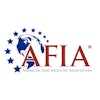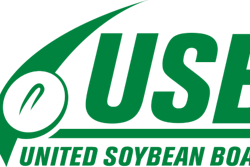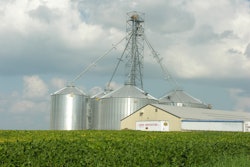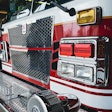With more than 60% of exported U.S. grain transported via inland waterways and a large percent of farm and ranch exports and imports moving through U.S. harbors, new projects for flood protection, port improvements and upgrades to the nation’s aging locks and dams are critical for all involved in agriculture, and the nation’s economy as a whole.
“Having an efficient and reliable inland waterways system linked to competitive ports is vital to America’s ability to provide affordable farm and other products domestically and to compete internationally,” said Andrew Walmsley, American Farm Bureau Federation transportation specialist.
As Senate and House lawmakers work to iron out the differences between two waterways improvement bills — the Water Resources Development Act (WRDA, S. 601) in the Senate and the Water Resources Reform and Development Act of 2013 (WRRDA, H.R. 3080) in the House — those much needed upgrades are closer to becoming reality.
Congress passed the first WRDA bill in 1974. Initially, WRDA was a two-year authorization, but a standoff among the House, Senate and White House over cost-sharing and environmental mitigation policies for Army Corps of Engineers programs derailed the legislation in 1976. It wasn’t until 1986 that WRDA got back on track. Having evolved into a five-year authorization, the 2007 WRDA expired in 2012.
Preparing for the post-Panamax world
While Congress and the White House were tussling over money and other political issues that put WRDA on the backburner, the United States’ up and coming competitors have been working away on their ports, harbors and riverways. Most notable is Panama, where a massive expansion of the Panama Canal will accommodate ships with two to three times the canal’s current capacity. These larger vessels are known as post-Panamax ships.
The Panama Canal is critical for U.S. exports because it serves as a shortcut between Gulf of Mexico ports, where many U.S. products get loaded onto ships, and critical export customers in Asia. Grain represents the second-biggest category of shipments through the canal, with 35 million tons passing through last year, according to the United Soybean Board. During the months following harvest, it can take between two to three days for a dry bulk ship to be able to pass through the canal. That includes the time a ship spends waiting in line. Last October, each day a ship spent waiting to cross the canal cost the ship’s owner more than $8,000.
With the expansion, which is on track to be completed in 2015, significantly bigger ships will be able to get through the canal much faster, which sounds like good news. After all, if you can ship more, importers will buy more, right?
But there’s a hitch: Not all U.S. ports will be prepared enough to accommodate the larger ships, once they can begin transiting the canal. Money woes are preventing many U.S. ports to start or even begin planning for the extensive dredging projects that would be needed to allow them to handle the larger ships. Currently, ships require a minimum depth of 39.5 feet, but the larger post-Panamax ships will require ports to be dredged to 50 feet at minimum.
“Agriculture is the only sector of the U.S. economy with a positive trade balance, meaning there’s more going out than coming in,” said Walmsley. “What is coming in is the money U.S. farm exports pump into the economy in the form of domestic jobs related to harvesting, packing, processing and transporting. Congress can’t afford not to make this investment in our waterways infrastructure.”
Weathering ebbs and flows
Without the upgrades and improvements WRDA would provide, U.S. inland waterways shippers are not only at the mercy of foreign of competitors, but Mother Nature, too.
In late 2011, Mississippi River levels and those of many of its tributaries were close to record highs, but the summer 2012 drought that scorched the Midwest had the Mississippi running so extremely low in January 2013 that barge operators were worried they wouldn’t be able to float their loads up and down the river.
A few short months later in April, farmers, barge operators and area residents and officials were once again watching the Mississippi, Missouri and other rivers, as they swelled to dangerous levels after heavy Midwestern rains. In early May, flood warnings were in place for rivers in Missouri, Tennessee, Alabama, Louisiana, Mississippi, Florida, Wisconsin, Illinois and Iowa.
Congress takes action
Transportation leaders in the House and the Senate said they were committed to finalizing WRDA legislation this year, and they’ve made good on their word.
On May 15, the Senate passed its Water Resources Development Act (S. 601), which includes provisions to annually increase the amount of funding provided through the Harbor Maintenance Trust Fund (HMTF) for port maintenance and dredging. Historically, the HMTF has collected more in shippers’ fees than it’s spent, leaving the fund with $7 billion in unspent money.
“We’ve got this ballooning balance and yet we’re not dredging our harbors and ports to the authorized amounts,” explained Paul Rohde, vice president of the Waterways Council, Inc. “That’s not a good trend to be in when you’re looking at the Panama Canal expansion wrapping up in the next two years.”
Under the Senate bill, beginning with $1 billion in 2014, HMTF spending would increase every year thereafter by $100 million through 2019. From 2020 forward, all funds collected would need to be spent.
The measure would streamline the process for U.S. Army Corps of Engineers projects, reduce project completion time and and increase the capacity of the Inland Waterways Trust Fund (IWTF).
Also under the bill, the Olmsted Lock and Dam project on the Ohio River in southern Illinois would be funded by the government.
Similarly, the House’s WRRDA, passed on Oct. 23, includes provisions that would reform the project delivery processes of the U.S. Army Corps of Engineers, create a prioritization of authorized improvements based upon risk of failure and economic return, and provide needed adjustments to the IWTF.
WRRDA would set target expenditures from the HMTF, increasing each year so that by fiscal 2020 and beyond, no less than 80% of the funds collected go to operation and maintenance activities.
The bill also would adjust the responsibility of cost share for the Olmsted Lock and Dam project so the federal government picks up a
larger share of the tab.
WRRDA would authorize about $8 billion in spending for 23 projects, while deauthorizing around $12 billion in projects authorized before the 2007 WRDA bill. Environmental reviews would also be streamlined to a three-year limit, and a $3 million cap for Army Corps’ feasibility studies would be put in place.
What more could we want?
Missing from both bills is an increase in the diesel fuel user fee, notes Rohde. The 20 cents/gallon fee is paid into the IWTF by barge and tow operators. The funds go toward the costs of construction and rehab of locks and dams.
Currently, IWTF funding comes from two sources. One is the fuel tax barge operators pay, which raises about $84 million annually. Annual federal appropriations bring the budget for the system to $180 million each year, far short of the estimated $380 million needed.
Waterways users, including the vessel operators who would be on the hook for the increased fee, want to bump it up by 6 to 9 cents/gallon to help close that funding gap.
The Senate did not include such a provision in its bill because under Congress’ rules, revenue-generating provisions must originate in the House. For its part, the House avoided the issue in an effort to pass as clean a bill as possible.
Similar destinations, but different routes
While both bills address many of the same key points, they take different approaches.
In relation to the Olmsted Lock and Dam project, for example, the Senate’s WRDA would have the project funded by the government. The House’s WRDDA, on the other hand, would require a 75% federal/25% IWTF cost share. The current cost share is 50-50 between federal and IWTF.
Designated as a seven-year project, the Olmsted Lock and Dam project is going into its third decade at three times the cost initially anticipated, making it the “poster child for how not to build infrastructure,” Rohde said.
The Waterways Council favors the proposal of full government funding to complete the project.
“That would free up $163 million annually for other priority projects that have been held up due to the Olmsted Lock and Dam’s cost overruns and delayed completion time,” Rohde explained. “Let’s get this finished,” he added. “If it takes a military construction model where we pay for it all upfront, let’s finish it that way.”
A precedent we don’t want
The Waterways Council has also conveyed to lawmakers its concerns about a provision in both bills that would close the Upper St. Anthony Falls Lock and Dam in an effort to stop Asian carp from traveling up the Mississippi River to Minnesota, where the recreation industry considers it a major threat.
“We’re asking the conferees to consider language addressing the economic impact of the lock closure. We’re really looking to prevent this from being a precedent-setting occasion,” said Rohde.
Under the legislation, the government would assess the environmental and economic impact of closing the Upper St. Anthony Falls Lock and Dam, as well as submit a report to Congress documenting the annual tonnage that’s been shipped through the dam in the last five years. If the annual average tonnage is less than 1.5 million tons, the dam would be closed within one year.
Looking at tonnage alone over such a relatively short period of time is far from an accurate measurement of how important any lock is, especially to the system as a whole.
“Tonnage is an arbitrary metric. It shouldn’t be the only justification in assessing whether a lock should be closed, or even have a restriction of service,” Rohde explained.
Plus, chances are slim that shutting the lock down would keep the Asian carp out of Minnesota.
Differences unlikely to sink Water Resources Development Act
Outweighing the differences between the bills is the strong bipartisan support they were passed with, noted Walmsley.
“Out of the more than 500 votes related to final passage of the legislation in the House and Senate, only 17 votes were against the bill,” he said.
While this unity is far from a guarantee of smooth sailing for lawmakers during the conference part of the legislative process, it provided a strong start. Once House and Senate lawmakers iron out the differences between the two bills, each chamber will vote on a single conference bill which, upon passage, will be sent to President Barack Obama for his signature.



















